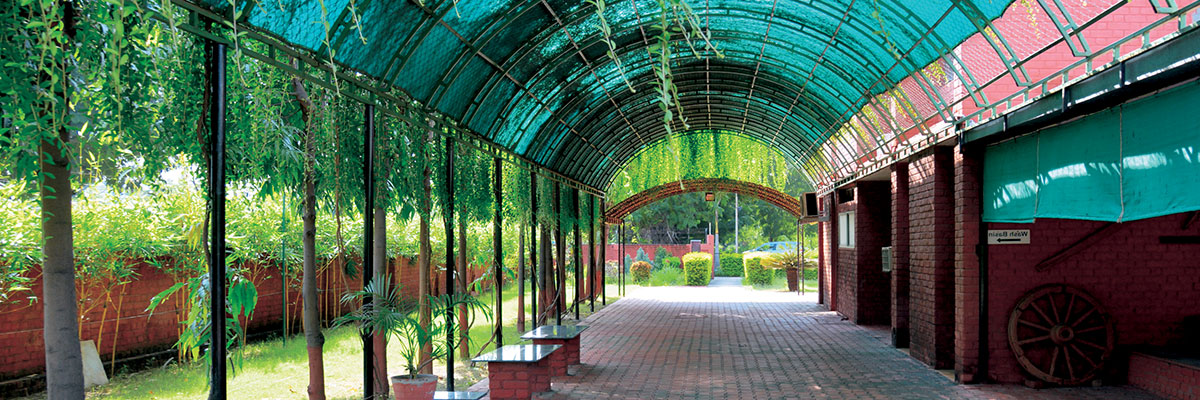- “The Centre is highly esteemed for the work it has done. With limited resources and human personnel the work that has been done is impressive.
- Dr. Lancy has worked hard for the Centre to gain the visibility the centre has acquired. His contacts with leading academicians have helped. Over 300 national and international academicians have either visited the Centre or participated in some seminars or the other in the Institute. The publications of the proceedings of the seminars as books by leading publishers have helped the Centre to be widely known as a quality research Institute.
- The centre has been highlighted in the media as well. Besides articles in newspapers and journals, the media has reported about the seminars conducted at the centre and some of the findings of the studies.
- All those the team met were unanimous that the centre was a felt need to enhance the intellectual dimension of the work of the Jesuits in Gujarat. The Province has a sense of pride in the project. All the Jesuits agree that the centre has done creditable work.
- The services of Dr. Lancy as a resource person for several meetings, workshops and seminars have been well appreciated both by the Province and civil society groups whom we know.
- There is a distinctive Jesuit characteristic to the Institute. Most of the studies that have been taken up and the articles written by Lancy have the discriminated and marginalized communities as the focus and factored in the aspect of justice.
- The Centre has a very supportive Governing Body. The Governing Body has great appreciation for the work of the Centre. There have been individuals like Lord Bhikhu Parekh, Dr A. M. Shah and others who have individually contributed to the well being of the institute academically and financially.
- The collaborators in the Institute feel very comfortable in the place and work as a team. All of them say that the Director respects their individuality and their work. The Institute has an excellent supportive staff.
- Major source of its funds have come from the Province and other individual Jesuits in the form of donation, corpus and project grant. It has also received some financial support for research projects and seminars from Indian Council of Social Science Research (ICSSR)”.
Plans for the future
CCD plans to undertake two long-term projects, viz. (1) Structurological studies on Gujarat Tribals; and (2) A series of publications based on the Journal of the Anthropological Society of Bombay (JASB) 1886-1936.
Most studies on Gujarat tribals have been culturological, covering their dress, diet, demeanour, dance, music, religion and customs. There are no focussed studies on their social structure, internal social and political organisation, which examine the organisation of family, lineage, clan and tribe, and their marriage rules. CCD has undertaken a pilot study of the Gamit tribe and plans to study nearly 30 other tribes of Gujarat in the coming years.
CCD has commenced bringing out a series titled Indian Anthropology, 1886-1936, edited by A.M. Shah and Lancy Lobo. Primus Publications, Delhi, has agreed to publish this series. The first two volumes are ready for publication. The Anthropological Society of Bombay was a learned society formed in 1886 by the English-educated literati of Bombay (now Mumbai), both European and Indian. It published the Journal of the Anthropological Society of Bombay continuously until 1936. In fifty years, JASB published fifteen volumes, each with eight numbers, plus a Silver Jubilee Number and a Golden Jubilee Number an average of two to three numbers a year. In all it published about 750 articles, covering various branches of anthropology. While the majority of articles were concerned with South Asia, a remarkably large number also covered West Asia, North-East Africa, East Asia, South-East Asia, Europe and America. Within South Asia, all the major regions and religions were covered. In all, about 130 authors contributed to the journal. They belonged to almost all parts of South Asia and several countries of Europe. This is a valuable record of the first fifty years of anthropology in South Asia, almost forgotten today. It offers rare ethnographies and theoretical discussions that serve to understand the society and culture of the time as a benchmark for studying social and cultural change and as insights into the creativity of indigenous scholarship. With a view to help scholars in using them, the articles in JASB are classified according to certain broad themes, and will be presented in a series of volumes as listed below:
Volume 1. Essays on Suicide and Self-immolation
Volume 2. Ethnography of East and South-East Asia
Volume 3. Ethnography of West Asia and North-East Africa
Volume 4. The Parsees: Their Traditional Society and Culture
Volume 5. Theoretical Approaches: Terms, Concepts and Methods
Volume 6. Physical Anthropology
Volume 7. Archaeology and Historiography
Volume 8. Religion and Society in South Asia: The Holistic Perspectives
Volume 9. South Asia: Regional Ethnographies
- South India and Ceylon
- Western India
- Central and North India
- Eastern India
CCD is sure this series will provide an overview of the formative period of Indian Anthropology, which will be of interest to a wide range of scholars in India and across the world.
Apart from these two major projects, in the coming years CCD will take up smaller studies on relevant issues of suicide; status of students who failed in Std. X and XII; and status of widows. CCD has planned two national seminars, one on environment, and the other on B.R. Ambedkar. A foundational lecture to be held each year is also contemplated.



